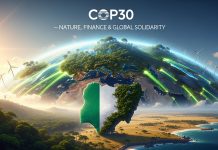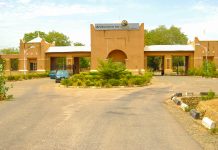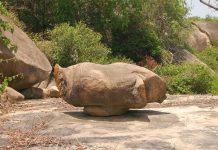Wetlands are areas of land that are either covered by water or saturated with water. The water is often groundwater, seeping up from an aquifer (an underground layer of rock or earth that holds groundwater) or spring.
Wetlands have also been described as terrestrial or semi-terrestrial ecosystems characterized by low drainage quality, slow waters or seldom standing water bodies filled with soil.
The water found in wetlands also sometimes comes from a nearby river or lake. In coastal regions that experience strong tides, however, seawater can also create wetlands.
Wetlands are transition zones usually covered by water for most of the year but the depth and duration of the seasonal flooding experienced on wetlands vary. Wetlands have the characteristic of not being totally dry land or underwater, they have the characteristics of both.
The three major kinds of wetlands are marshes, bogs, and swamps. This categorization is done based on the floral habitat and associated soil components.
Swamps

A swamp is a wetland that is permanently covered by water and dominated by trees. There are primarily two types of swamps which are the saltwater swamp and the freshwater swamp. Freshwater swamps are common in inland areas while saltwater swamps protect coasts from the open ocean.
Freshwater swamps most times are formed on flat land around lakes or streams where the water table is high and runoff is low. The water level on these flat lands sometimes fluctuates due to seasonal rainwater and flooding. Plants such as cattails, lotus, and cypress grow in the swamp’s wetland soil to maintain the ecosystems of the swamp.
Saltwater swamps are usually seen around tropical coastlines. These swamps begin to form with bare flats of mud or sand that are lightly covered by seawater during high tides. The water is a mixture of both freshwater and seawater. Plants such as mangrove trees which can tolerate brackish water are found in these areas.
Marshes

Swamps often give way to marshes, these wetlands firm a flat, grassy fringe near river mouths, in bays, and along coastlines. Many of them are alternately flooded and exposed to the movement of tides. Just like swamps, marshes are usually divided into freshwater and saltwater categories.
Freshwater Marshes
These marshes are often dominated by grasses and aquatic animals. These marshes develop around lakes and streams and are located hundreds of kilometers from the coast. Many marshes can be found in the region of North America through the northern Midwest of the United States. The fertile soil and temperate climate make the marshes in this region some of the richest in the world.
Saltwater Marshes
Saltwater marshes are some of the richest ecosystems for biodiversity. These marshes are full of grasses hence they provide nourishment to fungi, algae, shellfish, amphibians, fish, and reptiles. Other animals also feed on the vegetation and insects found in the marshes.
Bogs

While marshes and swamps are mostly found in warm climates, bogs which are known as ferns or moors are often located in cold or arctic areas in North America, Europe, and Asia. They also exist in high altitudes in warm climates like the Sierra Nevada and the United States.
Similar to many wetlands, bogs develop in areas where the water table or the upper surface of underground water is high. They usually begin in glacial depressions called kettle lakes. These kettle lakes slowly fill up with plant debris, and leaves, roots, and stems of large plants accumulate on the bed of the lake. As the lakes get shallower, mosses and other plants growing along the edges of the lake extend into the lake.
As they float over the lake and get tangled, they attract water-loving grasses and sedges, and soon the lake is filled with vegetation. Some of the vegetation decay in the water and form a thick spongy mat called peat. Peat is a useful fuel in many parts of the world, it is usually burned for heating and cooking. It is also the first step in the process of making coal.
The value of wetlands to life can not be overemphasized. Wetlands provide many ecosystem services such as water treatment and purification, serve as a buffer zone, and provide a vital resource for humans and animals. Across the globe, wetlands provide huge resources like reefs, lakes, rivers, tidal flats, and rice fields.
Wetlands are also used for recreational purposes like bird watching, sailing, and sports activities. Added to the fact that they are wildlife habitats for species including birds, amphibians, and mammals that are uniquely adapted to aquatic environments.
Wetlands are also useful for sediment protection and trapping, erosion control, and recycling of wastewater. Additionally, wetlands are useful for farming, especially the cultivation of rice and fish.
Wetlands are not to be regarded as wastelands as they were in the past when people felt that they should be drained or used as dumping grounds. Rather they should be regarded as places that provide important services to the environment and humans.

















